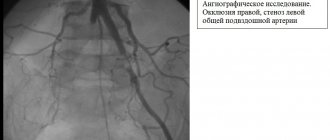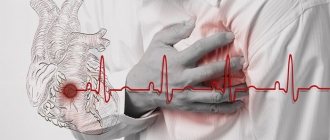What is vegetative-vascular dystonia
Vegetative-vascular dystonia is considered not as a separate disease, but as a complex of symptoms. It is characterized by a violation of the autonomic regulation of internal homeostasis. As a result, the patient experiences a violation of the vascular tone of the internal organs, and blood circulation suffers. The disorder is recorded in 80% of the population, a third of cases require VSD treatment.
The autonomic nervous system is an independent department that regulates the functioning of many organs. If coherence in functioning is disrupted, the patient experiences unpleasant symptoms related to various body systems:
- cardiovascular: arrhythmia, sweating, tachycardia, wetness of palms, blood pressure fluctuations, feeling of cold;
- respiratory: feeling of lack of air, difficulty breathing, feeling of pressure in the chest, lightheadedness, deterioration of well-being in stuffy rooms;
- gastrointestinal tract: nausea, diarrhea, lack of appetite, abdominal pain, increased gas formation, dry mouth, indigestion;
- genitourinary: decreased sexual desire, involuntary urination, impotence;
- nervous: tremor, sleep disturbance, muscle twitching.
Patients with vegetative-vascular dystonia exhibit symptoms of personality disorders: people are irritable, experience panic attacks, are fussy, impatient, and get tired quickly. They are constrained, worry about little things, and complain of absent-mindedness and memory impairment.
Vegetative-vascular dystonia in patients can manifest itself with only a few signs. If the symptoms do not cause severe discomfort, people tend to attribute the condition to frayed nerves or recent stress. Patients with VSD turn to doctors when the disorder interferes with work, attacks of fear, suffocation and other symptoms become regular in patients.
Doctors distinguish several types of nervous system disorders depending on the symptoms:
- Cardiac (impaired functioning of the cardiovascular system). VSD is manifested by chest pain, tachycardia, arrhythmia, and attacks of fear.
- Hypertensive. It is characterized in patients by high blood pressure, tachycardia, and a general deterioration in well-being.
- Hypotonic. It is characterized by a sharp decrease in blood pressure, chills, cold hands and feet, tinnitus, black spots before the eyes.
- Respiratory. This type of VSD is characterized by a feeling that there is not enough air, a feeling of a lump in the throat, compression of the chest, and panic attacks.
- Gastroenterological. This type of dystonia is diagnosed if the patient has gastrointestinal disturbances. The patient experiences abdominal cramps, heartburn, stool disturbances, and flatulence.
- Mixed. It manifests itself most often in patients and includes signs of several of the types described above.
The symptoms and types of VSD also depend on the causes that led to the disorder. A strong emotional experience or stress can trigger vegetative-vascular dystonia in a patient. There are other reasons:
- hereditary predisposition or disorders during intrauterine development, clearly manifested in adolescence or adulthood;
- autoimmune diseases;
- hormonal disorders (especially typical for women);
- past infectious diseases;
- head and neck injuries;
- emotional and physical overload;
- frequent travel, living in uncomfortable conditions;
- sedentary work, sedentary lifestyle;
- intoxication, bad habits (more typical for men).
Since the symptoms of vegetative-vascular dystonia may hide diseases of the heart, adrenal glands, respiratory organs, disturbances in the functioning of the endocrine and nervous systems, to make a diagnosis, the doctor prescribes a thorough diagnosis of VSD to the patient.
Other indications
Grandaxin is effective not only for VSD, but also for neuroses, as well as other similar conditions. Indications include:
- alcohol withdrawal;
- premenstrual, menopausal period;
- mental maladjustment;
- mild depression;
- conditions accompanied by muscle asthenia and atrophy, when muscle relaxant anxiolytics are unacceptable for use.
The drug is a daytime tranquilizer. It does not cause addiction or withdrawal symptoms.
An important property of Grandaxin is the relief of panic attacks. This is a feeling that occurs suddenly or under the influence of a stressful situation. Accompanied by a strong feeling of fear and vegetative disorders.
The concepts of VSD and panic attack are closely related: the attack is a kind of exacerbation of neurocirculatory dystonia. Therefore, therapy for these conditions follows a similar plan.
Treatment of VSD
The patient needs to consult several doctors. The first visit can be made to a therapist, who will recommend a list of tests and refer you to specialized specialists.
To rule out other diseases, the patient will need to consult the following doctors:
- cardiologist;
- endocrinologist;
- neurologist;
- psychiatrist (if necessary, after consultation with a neurologist),
- gastroenterologist;
- pulmonologist and others.
If specialized doctors do not find any serious diseases in the patient, they prescribe treatment. In most cases, it is aimed at relieving symptoms. Medicines relieve anxiety, spasms, improve blood circulation in the head, and regulate blood pressure. In addition to medications, the patient is recommended to undergo physical therapy. They eliminate pain, metabolic disorders, and restore vascular tone.
Along with taking medications, massage and acupuncture give good results. If necessary, the patient is referred for consultation to a psychologist, who helps to cope with fears, overcome internal complexes, and solve life problems that have caused a stressful state. Patients are advised to rest, light physical activity (if the patient leads a sedentary lifestyle), walks in the fresh air, and sanatorium treatment for vegetative-vascular dystonia.
Treatment of VSD in women
Women are more often susceptible to disorders of the autonomic nervous system. The cause is emotionality, an acute reaction to stressful life situations, nervous overstrain, fluctuations in hormone levels in adolescence, during pregnancy or menopause.
Treatment of vegetative-vascular dystonia in women is aimed at normalizing the functions of the adrenal glands, which produce stress hormones. Patients are prescribed sedatives, vitamin complexes with calcium and magnesium to strengthen the nervous system. If the cause of a disorder of the autonomic nervous system is severe stress, it is recommended to work with a psychologist or consult a psychiatrist.
Treatment of VSD in men
Representatives of the stronger sex suffer from vegetative-vascular dystonia due to physical or nervous stress at work, injuries, and bad habits. In addition to standard treatment with antidepressants and vitamin complexes, treatment of vegetative-vascular dystonia in men includes a review of the daily routine, limiting or increasing physical activity (depending on activity), and combating bad habits.
If the disorder is caused by the consequences of injury or hereditary diseases, the man will have to undergo examination and treatment aimed at eliminating the underlying pathology.
Diagnostics
Since a disorder of the autonomic nervous system manifests itself with many symptoms, a thorough examination is required to make a diagnosis. Before starting treatment for VSD in adults, it is recommended to conduct the following studies:
- General blood and urine analysis;
- MRI and (or) CT;
- electrocardiogram;
- Ultrasound of systems involved in symptoms;
- blood for hormones;
- electroencephalography as an auxiliary diagnostic method.
Based on the results of diagnosing VSD in adults, the doctor determines whether the patient has other diseases and makes a final diagnosis.
Treatment methods for VSD
Treatment of VSD in Moscow is carried out using medication and physiotherapeutic methods. The choice depends on the characteristics of the patient’s condition and symptoms of disorders.
Drug therapy
Treatment of vegetative-vascular dystonia in adults should be comprehensive. The following groups of drugs are used for this:
- Sedatives. Medicines relax, calm, normalize sleep, and relieve anxiety. Good results are obtained with preparations based on medicinal herbs or containing synthetic relaxants (barbiturates).
- Cardiovascular. The drugs relieve arrhythmia, normalize blood pressure, and improve cerebral circulation. To increase their effectiveness, patients need to sleep at least 8 hours a day.
- Medicines to normalize the functioning of the nervous system. There are several groups of drugs. For VSD, the following are used: tranquilizers (drugs relieve anxiety), sleeping pills (normalize sleep), antidepressants (treat the symptom complex of depression, including increasing mood), neuroleptics (reduce the sensitivity of nerve endings, are used to treat severe emotional and mental arousal), nootropics ( to improve cerebral circulation).
- Vitamin complexes. The drugs normalize the balance of vitamins and minerals and strengthen the nervous system.
- Antispasmodics. Necessary for muscle weakness, stomach cramps, headaches.
- Hormonal drugs. The drugs are used if VSD has developed against the background of hormonal imbalance.
- Diuretic medications. These drugs remove excess fluid, prevent stagnation and swelling, and ensure good blood and lymph circulation.
When choosing medications, the patient’s age and existing diseases are also taken into account.
Physiotherapy
In addition to medications, the symptoms of the disorder are relieved by physiotherapeutic procedures. Treatment of vegetative-vascular dystonia in Moscow includes:
- bioresonance therapy;
- reflexology;
- Exercise therapy according to a special course of exercises;
- massage;
- acupuncture;
- laser and magnetic therapy;
- electrophoresis with sedatives;
- electrosleep;
- darsonvalization;
- aeroionotherapy.
Massage, exercise therapy, acupuncture should be carried out by specialists. Procedures are selected individually.
Prevention
After a course of VSD therapy, as well as to prevent nervous breakdown, doctors recommend the following measures to patients:
- various exercises, sports;
- walk as often as possible;
- start doing yoga, meditation, and other techniques aimed at relaxation;
- vitamin therapy courses;
- contrast shower (if there are no contraindications).
Patients are advised to avoid overexertion, find time to rest, and get enough sleep. At the first attacks or intensification of symptoms of the disorder, it is better to consult a doctor. In case of severe manifestations of dysfunction of the autonomic system, the patient is hospitalized.
Tranquilizers and Grandaxin
Tranquilizers are identical to the concept of anxiolytics. Translated from Latin, anxietas means fear or anxiety, and litikoc from ancient Greek means weakening. Thus, tranquilizers are designed to relieve anxiety.
Anxiolytics are called minor tranquilizers, while antipsychotics are classified as major tranquilizers. Most of them exhibit 5 main effects:
- anxiolytic - elimination of emotional stress, obsessive thoughts and fears, reduction of anxiety;
- sedative - removal of psychomotor excitability, slowing down activity, speed of reactions, both mental and motor. Decreased concentration;
- sleeping pills - normalization of sleep, increasing its depth;
- muscle relaxant - muscle relaxation. May be accompanied by lethargy, weakness, slow reaction, excessive relaxation;
- anticonvulsant - reduction of excitation in epileptoid foci of the brain.
Grandaxin is also a representative of tranquilizers. However, it does not exhibit a pronounced sedative, muscle relaxant and anticonvulsant effect, but has mainly an anti-anxiety effect.
Complications
Despite the fact that dystonia of the vegetative-vascular system is not considered as an isolated disease, many symptoms can lead to serious complications:
- Vegetative crisis. The complication manifests itself as regular panic attacks, tachycardia, and pale skin. During a vagoinsular crisis, breathing is difficult, flatulence occurs, blood pressure and pulse decrease, and diarrhea is possible. The likelihood of loss of consciousness increases.
- Cardiovascular diseases. Against the background of crises, hypertension or hypotension, tachycardia, and arrhythmia develop. Disruption of the heart and vascular tone can lead the patient to myocardial infarction, stroke and other dangerous diseases.
- Neurological and mental diseases. If you do not try to stop the attacks, the condition will worsen. A disorder in the functioning of the vegetative-vascular system leads to the appearance of obsessions, a constant experience of fear, and tremors of the limbs.
- Digestive disorders. If crises are manifested by disruption of the gastrointestinal tract, the situation will subsequently worsen. The patient may develop gastritis, peptic ulcers, gastroenteritis and other diseases in which food is poorly digested, constipation occurs, and appetite is lost.
Vegetative-vascular dystonia (dysfunction syndrome of the autonomic nervous system) in itself is not a life-threatening disease. But it leads to complications that worsen the quality of life and give rise to other pathologies, the consequences of which can be threatening. The sooner you start treating the disease, the faster you will be able to get rid of the symptoms.
In our clinic, patients will receive qualified medical care. Here, patients will be able to undergo a full examination and consult with specialists. Our doctors approach drawing up a treatment plan individually, taking into account the characteristics of each patient’s body.
Description
Grandaxin is an anxiolytic drug or tranquilizer. Produced in 50 mg tablets. They have a round and flat shape, the color range varies from white to grayish. On one side there is a dividing line, on the other there is the Grandax logo.
The tablets are placed on a blister that holds 10 tablets. There are 2 or 6 pieces in a package.
The active substance of Grandaxin is represented by tofisopam. It is obtained by an atypical chemical modification of the diazepam molecule. Tofisopam belongs to the group of benzodiazepines and exhibits the properties of tranquilizers, but has some peculiarities.










